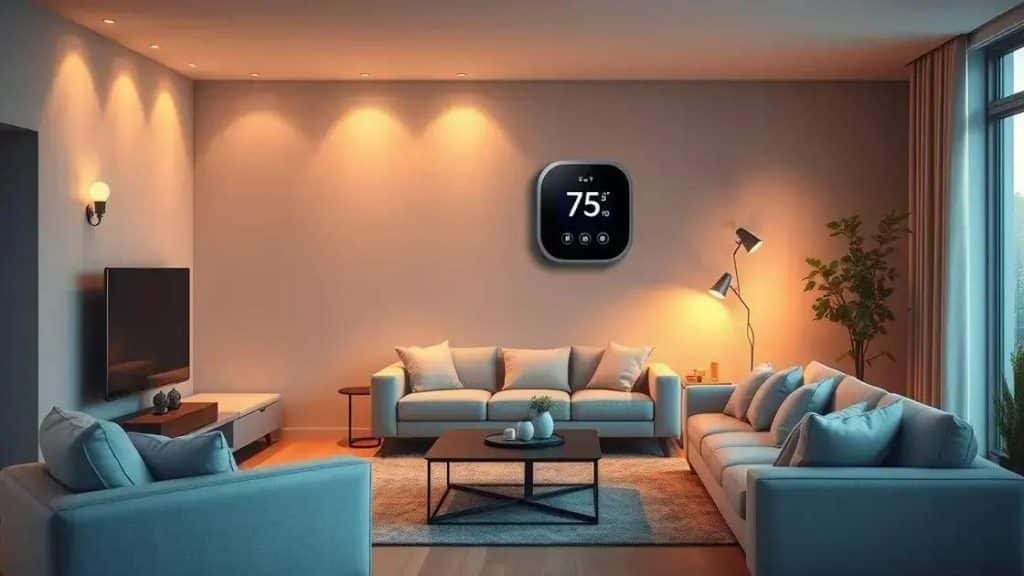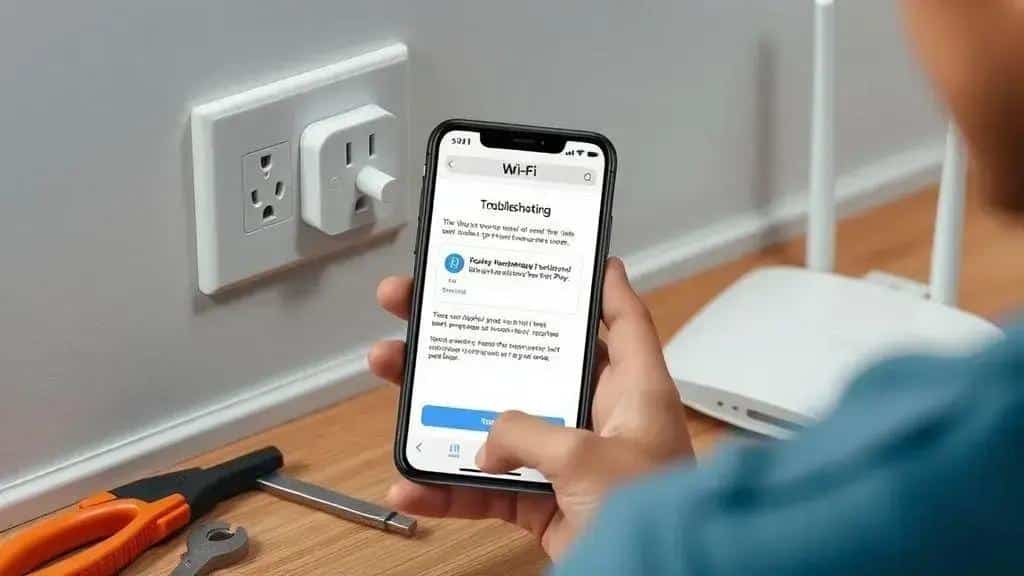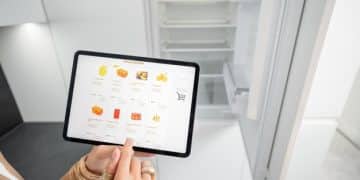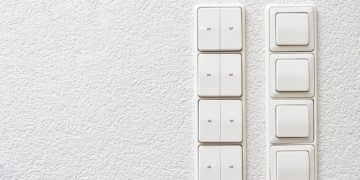Installing smart plugs yourself: a step-by-step guide

Installing smart plugs yourself involves selecting a suitable location, plugging in the device, downloading the app, connecting to Wi-Fi, and configuring settings for remote control and automation.
Installing smart plugs yourself is a great way to dip your toes into home automation. Have you ever wondered how much easier it would be to control your devices with just your voice? Let’s dive into how you can make this a reality.
Understanding smart plugs and their benefits
Smart plugs are small devices that allow you to control your electronics remotely. By simply plugging your devices into these smart plugs, you can turn them on or off using your smartphone or voice commands. Understanding smart plugs is crucial for optimizing your home automation experience.
What are smart plugs?
A smart plug is an adaptable outlet adapter that connects your appliances to your home Wi-Fi network. Once connected, you can manage those appliances anytime, anywhere using an app. They work well with various devices like lamps, fans, and coffee makers.
Benefits of using smart plugs
- Energy savings: Smart plugs can help reduce electricity bills by allowing you to schedule when appliances should run.
- Convenience: Control your devices from anywhere using your smartphone.
- Home automation: Easily integrate with voice assistants and set routines for multiple devices.
Another key benefit is the peace of mind smart plugs provide. You can program them to turn on or off while you’re away, making your home look occupied. Additionally, they enhance your daily routines. Imagine waking up to a coffee maker that’s already brewing your favorite beverage!
Understanding the capabilities of smart plugs can truly enhance your home environment. They aren’t just a novelty; they can really make life easier and more efficient. So, whether you want to control your lights, manage energy usage, or create a smarter home, integrating smart plugs is a step in the right direction.
Tools and materials needed for installation

When you’re ready for installing smart plugs yourself, having the right tools and materials is essential. A simple setup can be made easy with a few items at hand. Understanding what you’ll need is the first step to a successful installation.
Essential tools
Having the proper tools will make the installation smoother. Here’s what you should gather:
- Smart plugs: Choose a reliable brand that fits your needs.
- Wi-Fi connection: Ensure your home network is strong and accessible.
- Smartphone or tablet: This will be used to control your plugs and set them up.
Additionally, a small screwdriver can be handy. Some smart plugs may require a bit of adjustment during installation, especially if they have a mechanical switch.
Materials to consider
Aside from tools, there are materials that might come in handy:
- Electrical tape: Useful for securing any wires if needed.
- Power strip: If you have multiple devices, consider using a power strip to connect them.
- Label maker or sticky notes: For organizing and identifying your appliances easily.
Preparation is key when you’re planning to set up smart plugs. By having these tools and materials ready, you can ensure the installation process goes smoothly. It’s a great way to take control of your home automation, making it easier to manage your devices.
Step-by-step process for installing smart plugs
Installing smart plugs can seem daunting, but with a clear step-by-step process, you can achieve it easily. Let’s break it down in simple terms to help you get started efficiently. The following steps will guide you in the installation process of your smart plugs.
Step 1: Choose the Right Location
Select a suitable outlet for your smart plug. Ensure it is near the device you want to automate. It should also be in range of your Wi-Fi network to function properly.
Step 2: Plug in the Smart Plug
Once you have the right spot, plug the smart plug into the outlet. Make sure it fits snugly and is secure. After this, plug your device into the smart plug.
Step 3: Download the App
Most smart plugs require an app for setup. Download the necessary app on your smartphone or tablet and create an account if needed. This app will help you control your devices remotely.
Step 4: Connect to the Wi-Fi
Open the app and follow the prompts to connect your smart plug to your Wi-Fi network. This step is crucial, as it allows you to control the plug from anywhere.
Step 5: Configure Settings
- Set a name for your smart plug in the app.
- Customize any settings, like scheduling and automation features.
- Connect it to your voice assistant if needed.
After configuration, you can test the smart plug. Use the app to turn the device on and off to ensure everything works properly. If there are issues, double-check the Wi-Fi connection and settings.
Common troubleshooting tips after installation

After installing smart plugs, you might encounter some issues. Troubleshooting is essential to ensure everything runs smoothly. Here are common challenges and tips on how to address them effectively.
Problem 1: Smart Plug Not Responding
If your smart plug is unresponsive, first check if it is properly plugged in. Sometimes, a loose connection can cause it to malfunction. Ensure that the outlet is functioning by testing it with another device.
Problem 2: Wi-Fi Connection Issues
Connectivity problems are frequent with smart devices. Make sure your Wi-Fi network is stable and within range. If your plug cannot connect:
- Restart your router.
- Move the smart plug closer to the router.
- Check if the device is set up for the correct Wi-Fi frequency (2.4GHz is typically required).
Problem 3: App Not Finding Smart Plug
Sometimes, the app cannot detect the smart plug. Try the following:
- Refresh the app or reinstall it.
- Reset the smart plug by following the manufacturer’s instructions.
- Ensure your phone is connected to the same network.
These troubleshooting tips can help resolve many common issues. If problems persist, consult the user manual or contact customer support for your specific smart plug model. Keeping your smart devices updated with the latest software can also prevent potential issues.
FAQ – Frequently Asked Questions about Installing Smart Plugs
What do I need to install smart plugs?
To install smart plugs, you need the smart plugs themselves, a stable Wi-Fi connection, and a smartphone with the required app downloaded.
Can I control smart plugs when I’m not at home?
Yes, once connected to your Wi-Fi and set up through the app, you can control smart plugs from anywhere using your smartphone.
What should I do if my smart plug won’t connect to Wi-Fi?
If your smart plug won’t connect, check the Wi-Fi signal strength, ensure you are on the correct frequency, and try restarting both the plug and your router.
Are smart plugs energy efficient?
Yes, smart plugs can help reduce energy consumption by allowing you to schedule devices to turn off when not in use, leading to potential savings on your electricity bill.





